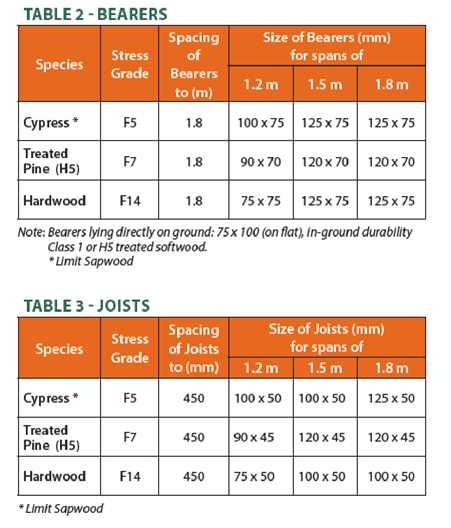Timber Grading – Strength
Do you know how strong your timber is?
A timber’s strength in a construction context refers to the ability of a piece of timber to maintain stress (force) without ‘failure’. ‘Failure’ in this sense doesn’t necessarily mean breaking, but is more about bending strength, ie: how much downward force can be applied without the member deflecting or sagging too much and causing problems.
Of course, complete or catastrophic failure can and does occur in some extreme instances — like when decks collapse — but the timber isn’t usually solely to blame. Most of the time the failure is as a result of a combination of factors such as poor or non-existent design, approvals and certification, inadequate construction methods and fixings etc.
So how is timber strength determined and how is it categorised?
Firstly, we need to know three things:
- The species of timber (some species are stronger than others).
- The moisture content of the timber (dry timber is stronger than green timber)
- The defects in the board (more defects = less strength).
Once these three things are established, timber can be categorised into a Stress (strength) Grade.
Most hardwoods and some softwoods are visually stress graded using an “F” rating with the higher the number, the stronger the timber. F14 for example means that it can withstand a force of 14MPa without excessive deflection. F17 is stronger and so it goes up to F34 for some exceptionally strong species which have been kiln dried and are free of any defects.
Most species of plantation, structural pine are graded by a machine that bends each board with a set amount of force and measures its deflection. The less it bends with a set force applied, the stronger the piece is. The grading scale is represented by an MGP (Machine Graded Pine) rating which can vary from MGP10-MGP15.
Engineers and building designers use this information to specify the right size and stress grade of timber members in a building to ensure that they can adequately withstand the force being applied to them, ie: do the job required without deflecting too much or breaking. Span Tables also use this information as an easy guide to see how far framing members of a certain size and Stress Grade will span (see below for example).
It’s logical that a piece of F27 timber will span a lot further than the same size piece of F14. Alternatively, you could use a smaller piece of F27 to do the same job as a larger, weaker piece of F14.


